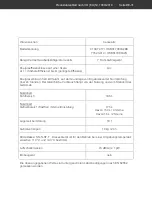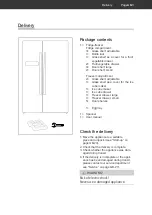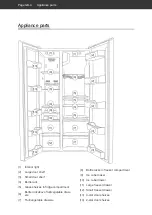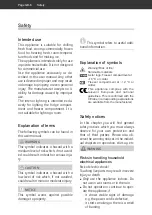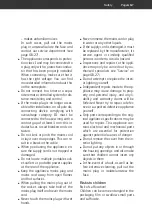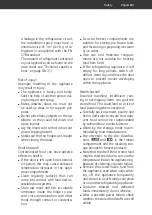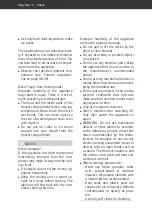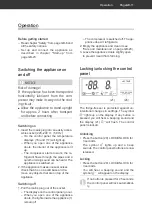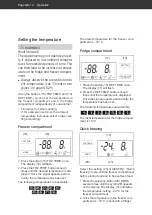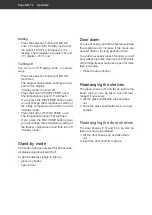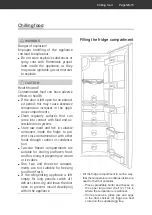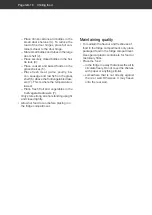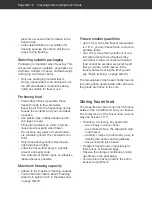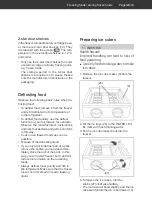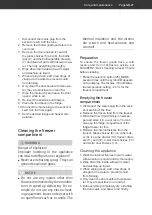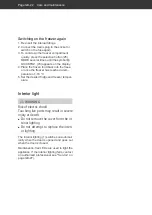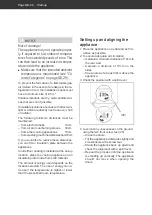
Safety
Page GB-10
■
Use only fresh drinking water to make
ice cubes.
The appliance may not operate proper-
ly if exposed to low ambient tempera-
tures for extended periods of time. This
can then lead to an increase in temper-
ature inside the appliance.
■
Observe the specifi ed ambient tem-
perature (see “Climate categories”
line on page GB-29).
Risk of injury from frozen goods!
Improper handling of the appliance
may result in injury. There is a risk of
burns caused by low temperatures.
■
The food and the inside walls of the
freezer compartment have a very low
temperature. Never touch them with
wet hands. This can cause injury to
the skin. Skin damage can occur even
with dry skin.
■
Do not put ice cubes or ice cream
straight into your mouth from the
freezer compartment.
NOTICE
Risk of damage!
If the appliance has been transported
horizontally, lubricant from the com-
pressor may make its way into the cool-
ing circuit.
■
If possible, do not tilt the cooling ap-
pliance horizontally.
■
Allow the cooling unit to stand up-
right for 2 hours before start-up. The
lubricant will fl ow back into the com-
pressor during this time.
Improper handling of the appliance
can lead to property damage.
■
Do not pull or lift the device by the
doors or door handles.
■
Do not use sharp or pointed objects
to unpack it.
■
Do not use any electrical parts inside
the appliance that do not conform to
the manufacturer’s recommended
design.
■
Do not use any mechanical devices or
means other than those recommend-
ed by the manufacturer.
■
Do not put any objects in the cooling
system’s ventilation slots and also
make sure that children cannot insert
any objects in them.
■
Only use original accessories.
■
Wait 5 minutes after switching off.
Only then switch the appliance on
again.
■
WARNING: Do not use mechanical
devices or other means to accelera-
te the defrosting process, other than
those recommended by the manu-
facturer, for example, do not use any
electric heating equipment, knives or
devices with an open fl ame such as
a candle. The thermal insulation and
the interior are scratch and heat-sen-
sitive and can melt.
■
When cleaning, please note:
–
Never use harsh, granular, soda,
acid, solvent-based or abrasive
cleaners. All-purpose cleaners with
a neutral pH are recommended.
–
Door seals and plastic parts are
sensitive to oil and grease. Remove
contaminants as quickly as possi-
ble.
–
Use only soft cloths for cleaning.


